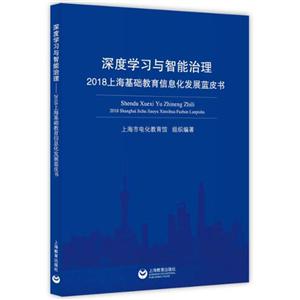第二语言习得研究概况

|
第二语言习得研究概况作者:弗里曼(Diane Larsen-Freeman) 开 本:16开 书号ISBN:7560020100 定价:47.9 出版时间:2000-08-01 出版社:外语教学与研究出版社 |
第二语言习得研究概况 本书特色
《第二语言习得研究概况》:当代国外语言学与应用语言学文库
第二语言习得研究概况 目录
Preface by HalldayGeneral Editor's PrefaceAuthors' PrefaceAcknowledgements1 Introduction1.1 The place of second language in the world today1.2 Why study second language acquisition?1.3 Development of the field of study of second language acquisition1.4 The scope of second lanb, uage acquisition research NotesActivitiesSuggestions for further reading2 Second language acquisition research methodology2.1 Introduction2.2 Qualitative versus quantitative methodologies2.2.1 Introspection2.2.2 Participant observatiorf2.2.3 Non-participant observation2.2.4 Focused description2.2.5 Pre-experiment2.2.6 Quasi-experimem2.2.7 Experiment2.3 Setting2.4 Instrumentation: production data elicitation2.5 Variability problem2.6 Instrumentation: intuitional data elicitation2.7 Instrumentation: use of miniature,languages2.8 Instrumentation: affective variables2.9 Instruments from other disciplines2.10 Measuring learner performance2.10.1 Defining language proficiency2.10.2 Defining an acquisition point2.10.3 Taskversus test2.10.4 An index of development2.11 ConclusionNotesActivitiesSuggestions for further reading3 SLA: Types of data analysis3.1 Introduction3.2 Contrastive analysis3.2.1 The contrastive analysis hypothesis3.2.2 Language acquisition as habit formation3.2.3 The CAH refuted3.3 Error analysis3.3.1 Strong versus weak Versions of the CAH3.3.2 Language acquisition as rule formation3.3.3 Interlingual versus intralingual errors3.3.4 Interlanguage3.3.5 Error analysis criticized3.4 Performance analysis3.4.1 Morpheme studies3.4.2 Developmental sequence3.4.3 Learner strategies3.4.4 The acquisition of forms and functions3.4.5 Formulaic utterances3.5 Discourse analysis3.5.1 Conversational analysi's3.5.2 Other applications of discourse analysis3.6 ConclusionNotesActivitiesSuggestions for further reading4 Interlanguage studies: Substantive fmdings4.1 Introduction4.2 ILs vary systematically4.2.1 Free variation4.2.2 Systematic vatriability4.2.3 Variability resulting from amount of attention4.2.4 Free variation as an impetus for development4.2.5 Multiple explanations for variability4.3 ILs exhibit common acquisition orders and developmental sequences4.3.1 Acquisition order: morpheme studies4.3.2 Developmental sequence: interrogatives4.3.3 Developmental sequence: negation4.4 ILs are influenced by the learner's L14.4.1 The effect of the L1 on SLA: how4.4.2 The effect of the L1 on SLA: when (markedness)4.4.3 The effect of the L1 on SLA: when (perceived transferability)NotesActivitiesSuggestions for further reading5 The linguistic environment for language acquisition5.1 Linguistic input for first language acquisition5.2 Linguistic input for second language acquisition5.2.1 Linguistic adjustments to non-native speakers5.2.2 Conversational adjustments to non-native speakers5.3 Does the linguistic environment make a difference?5.3.1 The effect of deviant input5.3.2 The role of conversation in developing syntax5.3.3 Input frequency-accuracy order relationships5.3.4 Input modification and second languagecomprehension5.3.5 Comprehensible input and second languageacquisitionNotesActivitiesSuggestions for further reading6 Explanations for differential success among second language learners6.1 Introduction6.2 Age6.2.1 Studies of age and SLA6.2.2 Explanations for age-related differences6.3 Aptitude6.4 Social-psychological factors6.4.1 Motivation6.4.2 Attitude6.5 Personality6.6 Cognitive style6.7 Hemisphere specialization6.8 Learning strategies6.9 Other factors6.10 ConclusionNotesActivitiesSuggestions for further reading7 Theories in second language acquisition7.1 Introduction7.2 Theory construction and social science7.2.1 The role of theories in making research cumulative7.2.2 Purposes a~d types of theory7.3 Nativist theories of SLA7.3.1 General characteristics7.3.2 Chomsky's Universal Grammar and SLA7.3.3 A critique of language-specific nativist theories7.3.4 Krashen's Monitor Theory7.3.5 A critique of Monitor Theory7.4 Environmentalist theories of SLA7.4.1 General characteristics7.4,2 Schumann's Pidginization Hypothesis and Acculturation Model7.4.3 A critique of the Pidginization Hypothesis and Acculturation Model7.5 Interactionisttheories of SLA7.5.1 General characteristics7.5.2 Givon's Functional-Typological Theory and SLA7.5.3 A critique of Givon's theory in SLA research7.5.4 The ZISA's group's Multidimensional Model7.5.5 A critique of the Multidimensional Model7.6 Conclusion: the state of SLA theories7.6.1 Comparing and evaluating theories7.6.2 A note of cautionNotesActivitiesSuggestions for further reading8 Instructed second language acquisition8.1 Introduction8.2 Early research on the effect of instruction, and some claimed implications8.3 The effect of instruction on accuracy orders and developmental sequences8.4 The effect of instruction on acquisition processes8.5 The effect of instruction on rate of acquisition8.6 The effect of instruction on the level of ultimate SL attainment8.7 Conclusion8.8 Explanations8.9 Researching instructional design featuresNotesActivitiesSuggestions for further readingEpilogueBibliographyIndex
社会科学 语言文字
在线阅读
- 最新内容
- 相关内容
- 网友推荐
- 图文推荐
零零教育社区:论坛热帖子
| [高考] 2022 西安电子科技大学《软件工程》大作业答案 (2022-04-25) |
| [家长教育] 孩子为什么会和父母感情疏离? (2019-07-14) |
| [教师分享] 给远方姐姐的一封信 (2018-11-07) |
| [教师分享] 伸缩门 (2018-11-07) |
| [教师分享] 回家乡 (2018-11-07) |
| [教师分享] 是风味也是人间 (2018-11-07) |
| [教师分享] 一句格言的启示 (2018-11-07) |
| [教师分享] 无规矩不成方圆 (2018-11-07) |
| [教师分享] 第十届全国教育名家论坛有感(二) (2018-11-07) |
| [教师分享] 贪玩的小狗 (2018-11-07) |






